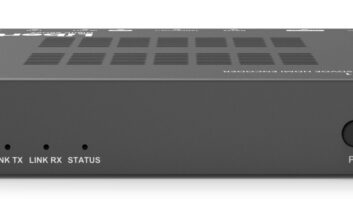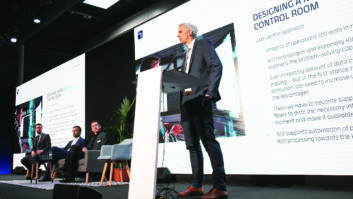 The UK’s first 4-day working week trial is now well underway, with more than 3,300 workers at 70 UK companies now working in the 100:80:100 model – 100% of the pay for 80% of the time, in exchange for 100% productivity. In a world of hybrid working, where many are experiencing problems such as not feeling they can take a sick day when working from home, this wellbeing initiative is a welcome change.
The UK’s first 4-day working week trial is now well underway, with more than 3,300 workers at 70 UK companies now working in the 100:80:100 model – 100% of the pay for 80% of the time, in exchange for 100% productivity. In a world of hybrid working, where many are experiencing problems such as not feeling they can take a sick day when working from home, this wellbeing initiative is a welcome change.
Workplaces are already swinging towards a more employee centric culture, due to external factors such as the Great Resignation and the labour shortage, putting a greater focus on wellbeing and the needs of the worker. The demand for a better work/life balance, especially when working from home, has led to a renewed interest in initiatives that help employees work more productively by making them feel comfortable. This 4-day work week trial is an enlightened evaluation of what it means to work, and where it is ultimately output rather than time online being valued. However, for this trial to work in the long run, employers need to be making sure their employees have the right materials to stay productive.
DITCHING PRESENTEEISM
Over time, and especially since the dawn of hybrid working, many workplaces have found themselves slipping into an unhealthy and ultimately damaging culture of presenteeism. A new phenomenon known as ‘digital presenteeism’ or ‘virtual presenteeism’ – where employees feel they need to always be contactable – has hit workers hard. An ‘always on’ mindset can be mistaken for a high level of productivity, when in fact the fatigue caused by constantly working overtime, or working when unwell, can instead cause employees to become burnt out, and ultimately less productive.
Feeling over worked not only contributes to the production of lower quality work, but in time can cause employees to quit altogether, as has been seen in the recent year. In fact, in 2021, 39% of employees cited working too many hours as a reason for their resignation.
The 4-day work week aims to combat this damaging culture by promoting the view that performance should not be measured by long hours online or in the office, but instead on output, productivity and the quality of work produced. By embracing this approach to work and giving employees time to rest, a company can ensure not only better overall output but a satisfied and happy workforce willing to stay.
WORKING SMARTER
From a wellbeing point of view, reducing the number of days in the working week is a brilliant initiative. However, when it comes to what the business needs to deliver, an obvious consideration will be if employees will be able to deal with the same level of output under reduced time conditions.
Working smarter, not harder is one of the main messages underpinning the 4-day week movement, and it’s important that employees are being provided with the right tools in order to do their job as efficiently as possible.
With one less day to work with, even small, repeated tasks can be made more efficient to help increase overall productivity. In processes that require the same action to be completed multiple times, (for example switching between settings in design software), the time it takes to change settings and use the same keyboard shortcuts can accumulate to a significant chunk of lost time. By using peripherals that can be custom programmed to perform task specific processes at the click of a button, (for example on the side of a computer mouse), employees can make small time savings that add up to larger productivity gains.
Along with customisable peripherals, it is also important to consider how employees are interacting with each other when working remotely. Offering hybrid working to employees has now become essential, and for this to work smoothly alongside a reduced working week businesses need to be thinking about the standard of their collaboration tools. Poor audio and video quality are both responsible for longer and more protracted meetings, wasting time in an already shorter week. Ensuring that every employee and meeting room is fitted with up-to-date and reliable video conferencing hardware, which uses the same consistent interface, reduces this risk and overall makes for a more streamlined hybrid working experience.
COMFORT FIRST
A benefit of hybrid working has been the ability to work from anywhere, however, this can lead to employees working in spaces not designed for work. The 4-day work week will require a higher level of focus to get the work done, and aches and pains from poorly designed equipment can be distracting and break employees out of the all-important ‘flow’, which will be key to optimising their productivity and will contribute to the reduced morale that the trial is attempting to combat. Implementing ergonomic tools into the workplace will be essential for maintaining productivity.
Repetitive Strain Injury (RSI) is unfortunately a common occurrence in the modern workplace, with RSI research showing that 1 in 50 UK workers suffer from the condition. This is more often than not caused by repeated use of uncomfortable computer mice and keyboards. Over time, this can lead to employees needing to take time off sick to recover from their RSI injuries.
However, there are steps that employers can take to ensure their employees do not become injured or lose focus because of how they work. Ergonomic mice and keyboards for example, that mould to the natural shape of the hands, such as vertical mice and curved keyboards, take pressure off the wrists and allow employees to type naturally without any break in their concentration.
BETTER WORKPLACE
The 4-day working week trial is a brand-new way of addressing the work/life balance that currently exists in many organisations. Due to this, it may seem intimidating to companies who feel that one less day will leave them lagging behind competition with a lower output. However, if appropriate steps are taken to pre-empt the new model – with ergonomics, customisable tech and a productivity-based approach – the opposite can be true, with higher-quality work and happier employees.







